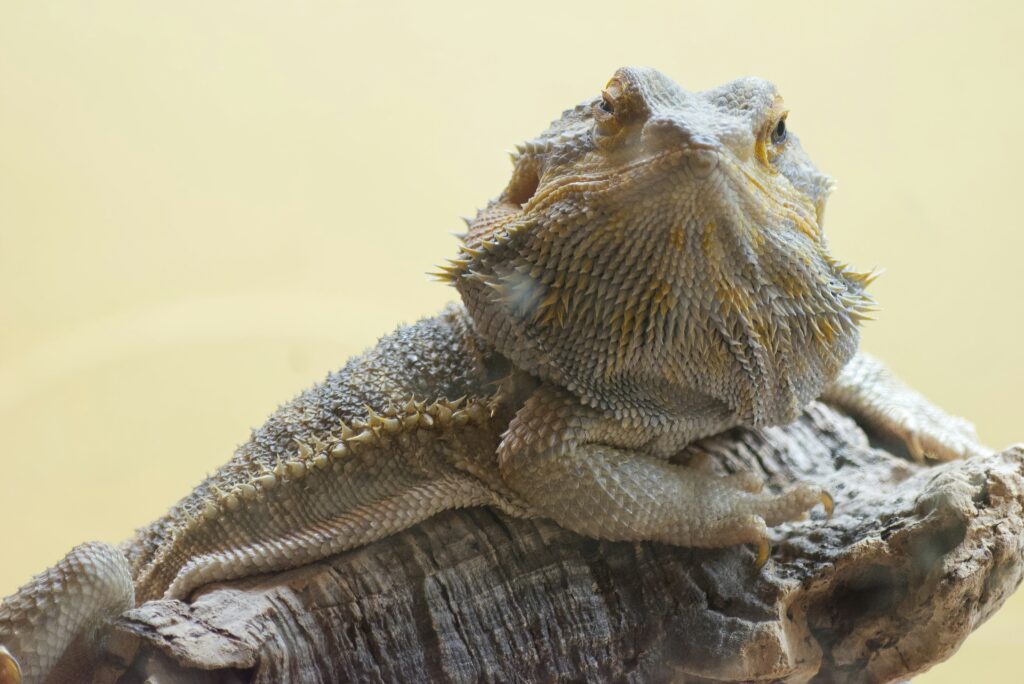What Are Exotic Pets?
When people hear “exotic pets,” they usually picture snakes or tarantulas. That’s part of it—but the real definition runs deeper. An exotic pet is any animal not commonly domesticated or traditionally kept as a household pet. Think beyond dogs and cats: reptiles like bearded dragons, amphibians like axolotls, parrots, sugar gliders, even certain species of turtles or giant millipedes all land in this category.
These animals come from diverse ecosystems and bring their own sets of needs. Some are low-maintenance on the surface but require specific heat, humidity, and diet conditions to thrive. Others, like parrots, bond deeply with their owners and need routine mental stimulation, not just fresh water and a perch.
Then there’s the legal side. You can’t just walk into a pet store and walk out with anything you fancy. Depending on your state or country, permits may be required. Some species are outright banned due to ecological risk, public safety, or conservation concerns. Ethically, the conversation gets even heavier. Wild-caught animals can fuel trafficking and cause major harm to wild populations.
Long story short: exotic doesn’t just mean weird or cool. It means specialized, legally sensitive, and ethically complex. If that sounds like a lot—good. It should be.
Why People Choose Exotic Animals
Exotic pets appeal to people who want something different. Not everyone dreams of a golden retriever. Some are drawn to sugar gliders, axolotls, or ball pythons because they’re rare, quiet, or simply fascinating to watch. For allergy sufferers, these pets can also be a practical choice—many don’t shed dander the way cats and dogs do. Then there’s the behavior factor: a bearded dragon’s head bob or a parrot’s mimicry isn’t your average pet experience.
But here’s where people get it wrong. Many assume small size equals low maintenance. A tiny tree frog may need a meticulously controlled habitat just to survive. Others think you can keep these pets in standard cages or feed them basic pet-store diets. The reality is much more specialized.
Social media has only amplified the interest. Viral videos of exotic pets dressed up, doing tricks, or simply looking cute fuel trends overnight. Platforms like TikTok and Instagram glamorize the ownership experience—without always showing the nuance. This has led to a spike in impulse purchases and, sadly, pet surrenders when the novelty fades and care proves harder than expected.
Bottom line: people love exotic pets for their uniqueness and rarity, but the lifestyle demands more than a highlight reel.
Core Care Requirements
Caring for an exotic pet means going beyond the basics. Unlike dogs or cats, these animals often require highly specialized environments and attention to thrive. Here’s what every prospective exotic pet owner must consider:
Habitat: More Than Just a Cage
A proper living environment is more than a glass tank or wire enclosure. Each species has specific environmental needs, and getting these right is essential for the animal’s health and well-being.
- Temperature: Many exotic pets, especially reptiles and amphibians, are ectothermic and need carefully controlled heat sources.
- Humidity: Species such as frogs, certain lizards, and invertebrates often require consistent humidity levels.
- Lighting: Some animals need full-spectrum UVB lighting to metabolize calcium and maintain bone health.
- Size & Enrichment: Enclosures should mimic natural environments with adequate space, hiding spots, and interactive elements to reduce stress and encourage natural behavior.
Diet: One Size Does Not Fit All
Feeding exotic pets properly is critical—and more complex than it appears. Many require diets that change with life stages, seasons, or reproductive cycles.
- Species-Specific Needs: Crickets might work for some reptiles, but others need a mix of fruits, greens, insects, or even specific supplements.
- Live vs. Prepared Foods: Know whether your pet needs live prey, fresh vegetables, or formulated pellets—and at what frequency.
- Feeding Schedules: Many exotic animals are nocturnal or sporadic eaters, requiring a personalized feeding routine.
Handling: Stress vs. Socialization
Physical interaction with exotic pets must be approached thoughtfully. Some thrive on human interaction; others find it distressing or dangerous.
- Know the Signs: Look for signs of stress such as hiding, refusing food, or rapid breathing.
- Taming Takes Time: Regular, gentle interaction helps build trust in some animals, but sudden handling can lead to injury or escape.
- Owner Education: Proper handling techniques prevent harm to both the animal and the owner.
Veterinary Care: Plan Ahead
Not all veterinarians are equipped to treat exotic animals. Emergency care and even routine check-ups require advance planning.
- Find an Exotics Vet: Look for vets who specialize in your animal’s species—and verify their experience.
- Preventative Care: Routine health checks, parasite screenings, and dietary reviews are critically important.
- Cost and Accessibility: Exotic veterinary care can be more expensive and less accessible than traditional pet care. Build these considerations into your budget and location planning.
A solid understanding of these core care requirements helps set a strong foundation for a happy, healthy life with your exotic pet.
Challenges of Owning an Exotic Pet
When it comes to exotic pets, the care doesn’t end with feeding and cleaning. These animals often outlive traditional pets—some reptiles and birds can live for decades. That’s not just a commitment, it’s a lifestyle equation. You’re not just buying a pet; you’re signing up for a long-haul contract.
Dietary needs are another sticking point. Many exotic animals require highly specific foods—live insects, fresh greens, whole prey, calibrated supplements. Throw in seasonal shifts in behavior or metabolism, and you’ve got a moving target of requirements. Climate control is another must-have. If your humidity drops or your basking bulb burns out, it’s not annoying—it’s deadly.
Then there’s the escape artist problem. Exotic pets are often small, fast, or absurdly clever. An unsecured terrarium or cracked cage door can lead to a pet lost in your home—or worse, turning up in the neighbor’s garage. For venomous or large animals, this raises serious safety concerns.
Finally, legality isn’t uniform. State and local regulations vary wildly. That cuddly sugar glider may be cool in one ZIP code and banned in the next. Owners need to understand municipal, state, and even federal laws. Break the rules, and it’s not just a fine—it’s potential confiscation or worse.
Owning an exotic pet isn’t impossible. But it’s far from a casual decision. If you’re not ready to meet high-stakes requirements day in and day out, you shouldn’t be in the game.
Responsible Ownership
Owning an exotic pet isn’t a whim purchase—it’s a lifestyle choice that demands upfront research and long-term thinking. Before you buy, know exactly what your chosen animal requires. We’re talking habitat setup, humidity levels, heating, specific diet, and even behavioral traits. A cute photo online won’t tell you that your new reptile needs UVB lighting 12 hours a day and a calcium-supplemented insect diet. Assume nothing; read everything.
Ethical sourcing matters. Avoid dealers or breeders who take animals from the wild—this feeds into illegal wildlife trafficking and can wreck ecosystems. A red flag: sellers who can’t tell you where or how the animal was bred. If they’re vague, walk away.
Also, don’t overlook adoption. Reptile rescues, bird sanctuaries, and small exotic shelters exist for a reason—people often underestimate the responsibility and bail. These animals need second chances, and you’re more likely to get an honest assessment of their temperament and needs.
And finally, ask yourself: what if you can’t keep the pet? Life changes—moves, allergies, financial shifts. Have a backup plan. That could mean lining up someone willing to take over care, or knowing which local sanctuary can help. Dropping your iguana at a park or listing your sugar glider online at random is not a plan—it’s neglect.
Responsible ownership starts before the pet even arrives.
Exotic Pet vs. Lifestyle Fit
Before you bring home a sugar glider or a bearded dragon, take a hard look at your routine. Some exotic pets need daily interaction and specialized care—others are fine being watched more than handled. If you travel a lot, work long hours, or tend to forget to water your plants, you’ll want something low-maintenance. Experience matters too. Beginners should avoid animals with complex environmental needs or strict diets until they’ve put in some time learning the ropes.
Budget is another unskippable factor. Exotic pets often come with startup costs for gear—enclosures, lighting, heating, and humidity equipment. On top of that, feeding an iguana or a ball python isn’t as simple as a bag of kibble. Vet visits? Not every clinic handles exotics, and the ones that do usually aren’t cheap.
Space is key. Can you house a parrot that needs to fly? A tortoise that wants to roam? Even small animals like ferrets or chameleons can require surprisingly large setups. Indoor vs. outdoor considerations matter—especially in colder climates where outdoor enclosures need serious insulation or aren’t viable at all.
Then there’s your household to think about. Kids and exotic pets aren’t always a great mix—some animals are fragile, others get stressed or defensive easily. Allergies need to be taken seriously too. And if you’ve already got pets, you’ll have to manage safety and compatibility carefully. Cats and snakes don’t usually become friends.
Choosing the right pet is less about what’s cool and more about what fits. Take your time. Match realistically. And when in doubt, ask experts, not influencers.
Learn more about choosing the right animal companion: Choosing the Right Breed for Your Lifestyle
Final Thoughts
Exotic pets are captivating, unique, and—when cared for properly—deeply rewarding companions. But their appeal comes with real responsibility. Before taking the leap, it’s essential to ask the right questions and prepare for a long-term commitment.
Rewarding—but Demanding
Bringing home an exotic animal can lead to enriching experiences:
- A window into rare animal behavior and biodiversity
- The satisfaction of learning and mastering specialized care
- A unique bond that’s different from traditional pet ownership
However, these benefits only come when the owner is prepared to meet the animal’s physical and psychological needs.
Think Long-Term
Caring for an exotic pet isn’t just about the present—it’s a commitment that often spans many years.
- Many exotic animals live longer than expected (some reptiles can live 15+ years)
- Specialized diets, lighting, and habitat needs add up over time
- Owners must be ready to adapt to changing life circumstances while still meeting pet needs
Be Informed, Be Ethical
Responsible exotic pet ownership means doing more than just browsing cute videos.
- Research extensively: species-specific care, legality, sourcing, and habitat requirements
- Prioritize conservation: avoid contributing to wildlife trafficking or irresponsible breeding
- Plan ahead: What happens if your situation changes or you can no longer provide proper care?
Final Reminder
Choosing an exotic pet means stepping into the role of both caretaker and advocate. It’s not just a hobby—it’s a responsibility. Do your homework, ask thoughtful questions, and only proceed if you’re fully committed.
The goal isn’t just to own something rare. It’s to care for something rare—thoughtfully, ethically, and long-term.


 Thadriel Tavendria, the founder of Pet Hub Loop, created the platform to help strengthen the bond between people and their pets. With a passion for animal welfare, he envisioned a trusted hub offering pet news, breed guides, product reviews, and training advice—making Pet Hub Loop a supportive resource for pet owners everywhere.
Thadriel Tavendria, the founder of Pet Hub Loop, created the platform to help strengthen the bond between people and their pets. With a passion for animal welfare, he envisioned a trusted hub offering pet news, breed guides, product reviews, and training advice—making Pet Hub Loop a supportive resource for pet owners everywhere.